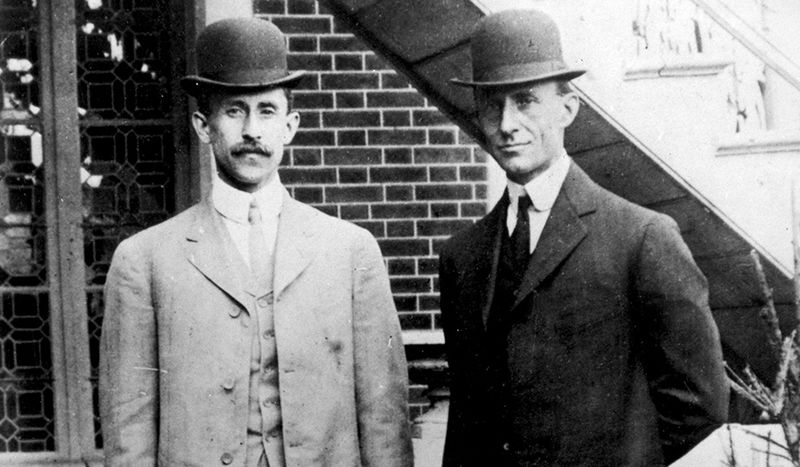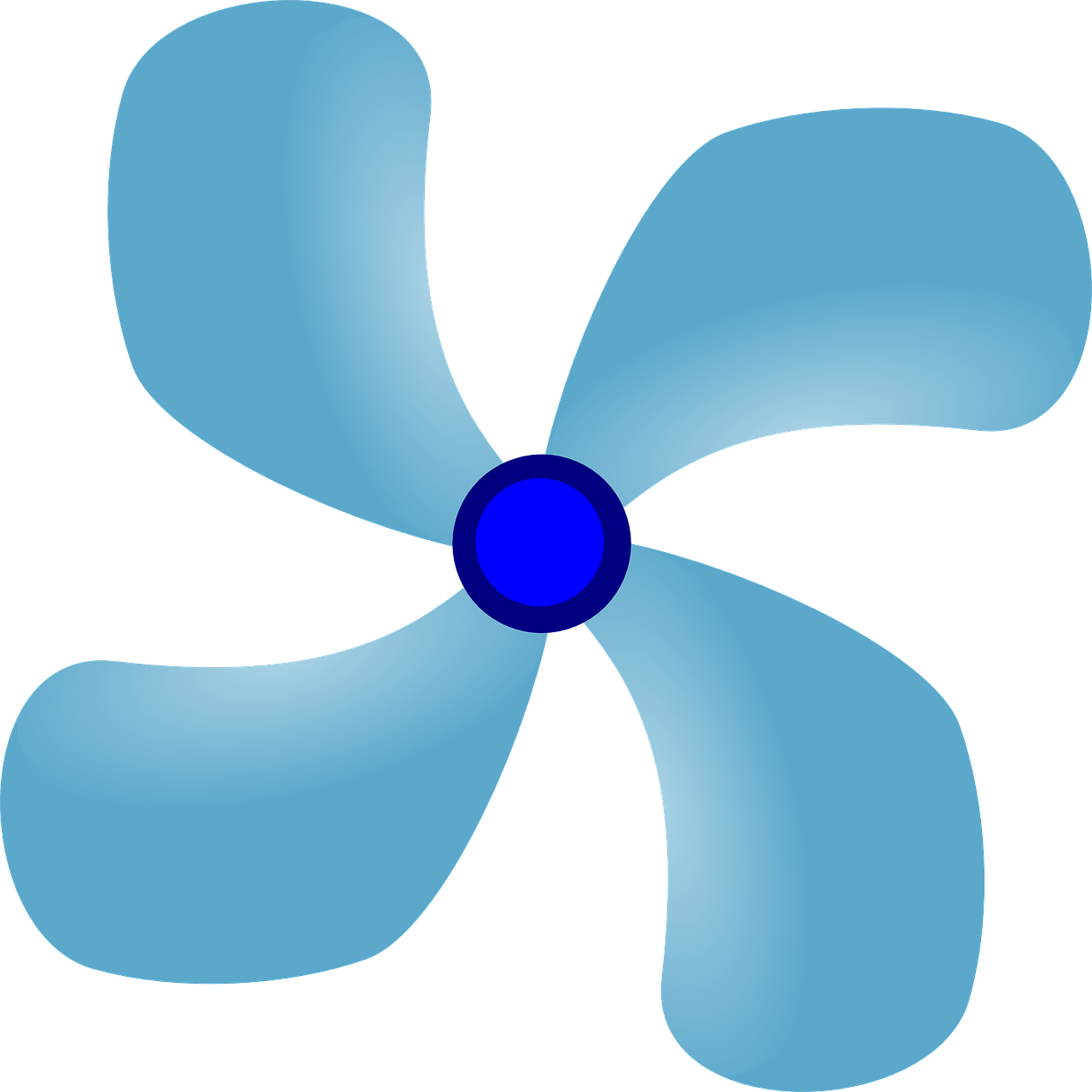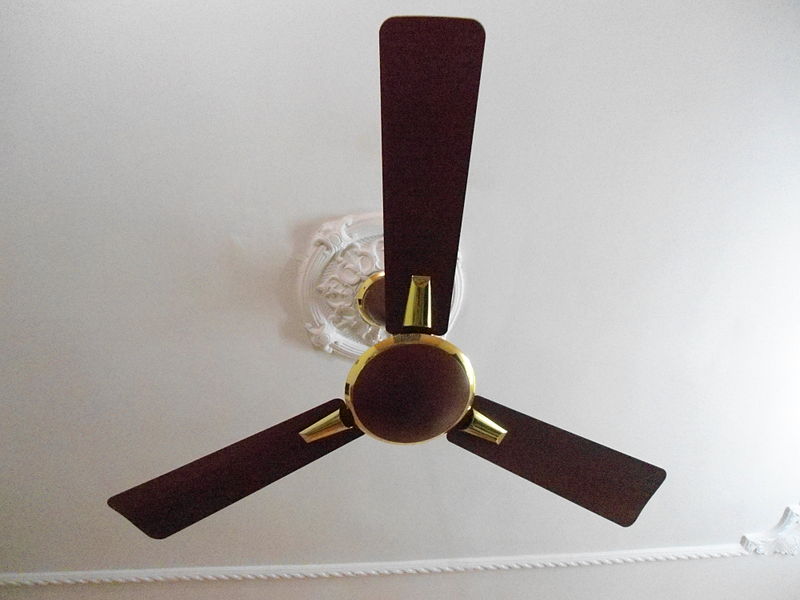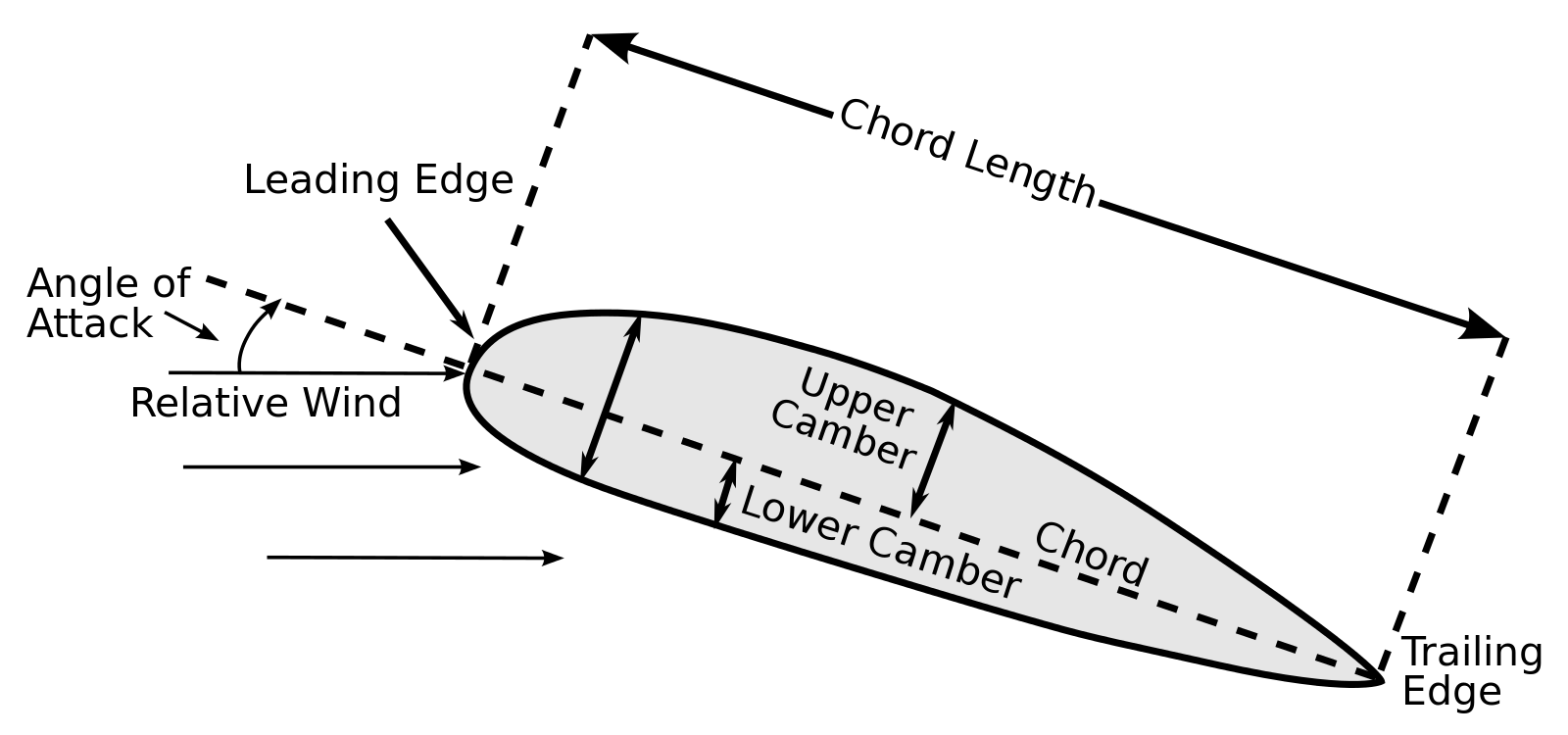Ever wondered why you can’t feel air blow whenever you are behind a standing fan or a vent? This is something that you may experience everyday of your life. In the office, hospital, even at home but may not care to ask "why?"
Lets leave our homes now and go to the sky!
AIRPLANE'S FLIGHT
Four forces acts on a moving aeroplane(British). Two horizontal opposite forces namely, Thrust(forward force) and drag(backward force). The other two are vertical opposite forces namely, lift(upward force) and gravity(downward force). The drag and gravity are two opposing forces that must be overcome for the plane to fly and move linearly.
If you are an upcoming physicist or engineer, maybe you felt that the engines in airplanes have special features that makes them fly, which is absent in other vehicles. NO, that’s wrong. The plane's flight is based on a principle similar to that of a rotating fan.
 The Wright Brothers. (Public domain, No attribution) from Wikimedia Commons
The Wright Brothers. (Public domain, No attribution) from Wikimedia Commons
Before progressing, much credit must be given to the Wright brothers, Orville and Wilbur, who were the two American aviation pioneers, creating and flying the first successful plane in the world, one of the greatest inventions of all time.
The Job of the Engine
.jpeg) Author:US federal aviation administration (public domain). From Wikimedia Commons
Author:US federal aviation administration (public domain). From Wikimedia Commons
As earlier stated, it is wrong to think that the engine of a plane, is what makes it fly. Its job, just as in cars, lorries and other vehicles is to move it forward at high speed. If you have always thought that, the engine is the key to flying a plane, then when next you want to travel with one, try removing the wings and see what happens when you take off. And please don’t tell anyone I am the one who asked you to perform this experiment. In short, the engine controls the thrust.
This is one of the mistakes people make, especially when they are new to this field. Another wrong understanding of the plane’s flight, even among aeronautic engineers goes thus: The True Aspect: For most airplanes, their wings are made to have a curved upper surface and a flat lower surface which is usually termed "aerofoil"(British). When, the plane moves at high speed, air molecules hits the front of the aerofoil, and separates into two parts. One part moves over the curved surface of the wing, while the other part moves underneath, along the flat surface.
 aerofoil with airflow. Author: Jhbdel(talk). (Licensed under Creative Commons Attribution-ShareAlike 3.0.) from Wikipedia
aerofoil with airflow. Author: Jhbdel(talk). (Licensed under Creative Commons Attribution-ShareAlike 3.0.) from Wikipedia
The False Aspect: Many explanations give that; since the length of the curved surface is greater than that of the flat surface, air molecules above the surface, have to move at a greater speed than that of the molecules underneath, in order for both to meet with each other at the end of the foil. And according to Bernoulli’s Principle, the pressure of the wind above the wing is lesser than that of the lower wind, since it is faster. As a result of this difference in air pressure around the wings, the plane tends to move upwards. The fact that there is pressure difference around the wing is true, but the reason for this difference and its effect from the above explanation is wrong.
Why?
- Nothing or no one can prove that, the air molecules which separate at the front of the front aerofoil will meet with as exact pairs at the back end of the foil. Fact, the molecules are meant to meet up other molecules in their path, before reaching the tail. Also, the above theory which explains that the air moving over the top, moves at a greater speed because it has longer distance to cover, goes against Newton’s law of physics, which states that:
In an inertial frame of reference , an object either remains at rest or continues to move at a constant velocity, unless acted upon by a force. Wikipedia - Newton's laws of motion
Illustration
An electric fan blows air across a big room or a small room at the same speed. It is the force of the fan that matters, not the distance. Air doesn’t know it has further to go and so decides to speed up. There is no force of distance. source
In a nutshell, what affects the speed of the wind, is the speed, with which the plane moves linearly and not the distance which the wind has to flow along. See conservation of linear momentum.
- Consider this condition. If the pressure difference was the true key to a plane's flight, then why can acrobatic planes fly upside down? If such planes were flown upside down, the higher air pressure is now above and the lower air pressure is beneath. According to the wrong explanation, this clearly means that, a ‘downlift' will be produced, which would push the plane downwards with a force greater than that of gravity, thereby causing it to crash.
The True Reason Why Planes, Fly
The Right explanation of Pressure Difference | DOWNWASH |
Already pointed out, one thing about the above fallacy which is true is the fact that, the air pressure over the wing is lesser than the air pressure underneath it. But, What's the true reason?
The top surface of the wing is curved, therefore has a longer length than the bottom. This means that the air molecules above the wing are stretched out into a bigger volume, which results to reduction in its pressure. Recall,
P = F/A....... Pressure The force acting on the two separated winds is the same, but the area of the top surface is larger than that of the bottom surface. And since pressure is inversely proportional to area, then the pressure of the top wind reduces. This causes a great increase in the velocity of the upper wind. But this doesn’t mean that the separated air molecules will meet as exact pairs, at the end of the foil. It only means that the upper wind has attained more speed which is greater than that of the aeroplane as well as the wind underneath. And when both winds meet at the tail, they would together, be speeding downwards and create a lifting force that makes the plane fly. See Newton’s third law of Motion.
Let's go back to the first question at the top.
“Ever wondered why you can’t feel air blow behind a standing fan or a vent?”
Why do ceiling fans suck or move air only in one direction?
 Propeller blades, (CC0 creative commons, No attribution) from Pixabay
Propeller blades, (CC0 creative commons, No attribution) from Pixabay
 The three blade ceiling fan at Nizampet. (Creative Commons Attribution-Share Alike 3.0 Unported) from Wikimedia Commons
The three blade ceiling fan at Nizampet. (Creative Commons Attribution-Share Alike 3.0 Unported) from Wikimedia Commons
The reason is because, the rotors are made to either be slightly curved or tilted at an angle, so that, as they rotate, they hit the air molecules at what is known as angle of attack.
 Angle of attack. Author: Civil air patrol.(public domain), from Wikipedia
This is exactly what happens when a helicopter wants to take off - but with a greater force. It is known as DOWNWASH. As the rotor moves the air downwards at high speed, an equal but opposite force(lift) is produced, which moves the chopper upwards. See Newtons third law of Motion.
Angle of attack. Author: Civil air patrol.(public domain), from Wikipedia
This is exactly what happens when a helicopter wants to take off - but with a greater force. It is known as DOWNWASH. As the rotor moves the air downwards at high speed, an equal but opposite force(lift) is produced, which moves the chopper upwards. See Newtons third law of Motion.
The wing of the airplane, performs this same function, even if its motion is linear and not circular. Since the wings are inclined, the air that moves along it are pushed downwards, at its tail, this as well causes downwash.
Even if the wings were to be symmetrical, and there was no pressure difference, and attainment of extra speed, downwash will still be created, so long the wing is tilted - but it will be lower than that of the former. This type of wing could be used in planes that carry less load and vice versa. The reason why the curved wing is used in planes which carry great load, is because it accelerates the downwash, causing the lifting force to be greater than the gravity. This makes flying safer. CONCLUSION The angle of attack is one of the most important phenomenon in flying a plane, whether it uses wings or rotating fans. It is what affects the direction of the downwash. The pilot can change the angle of attack, so that the downwash could turn to a horizontal backwash - usually done when landing. As the plane tilts to a point, airflow along the aerofoil is horizontal, and the plane moves downwards. For planes to produce high downwash enough to lift it, it has to move linearly for some time, to attain momentum. This is why planes, first have to move on the runway at high speed before ascending. Conclusively, an aeroplane/airplane, flies with its wings and rotors, both of them, having an angle of attack. REFERENCES * The Correct Explanation of Lift for Non-Engineers, by Terry Colon, 2017.
-
Airplanes - howplaneswork, by Chris Woodford, 2018
FURTHER READING: https://www.real-world-physics-problems.com/how-airplanes-fly.html
Note: All images used in this article, are CC0 licensed and were properly sourced
ALL ARGUMENTS, QUESTIONS AND ADDITIONS SHOULD BE PLACED IN THE COMMENT SECTION BELOW. Thank You
Contribute STEM content using the #steemstem tag and #stemng tag (for Nigerians only) | Support steemstem authors | Join our curation trail | Visit our Discord community | Delegate SP to steemstem
Convenient Delegation Links:
**
50 SP | 100SP | 500SP | 1,000SP | 5,000SP | 10,000SP | 50,000SP
**
